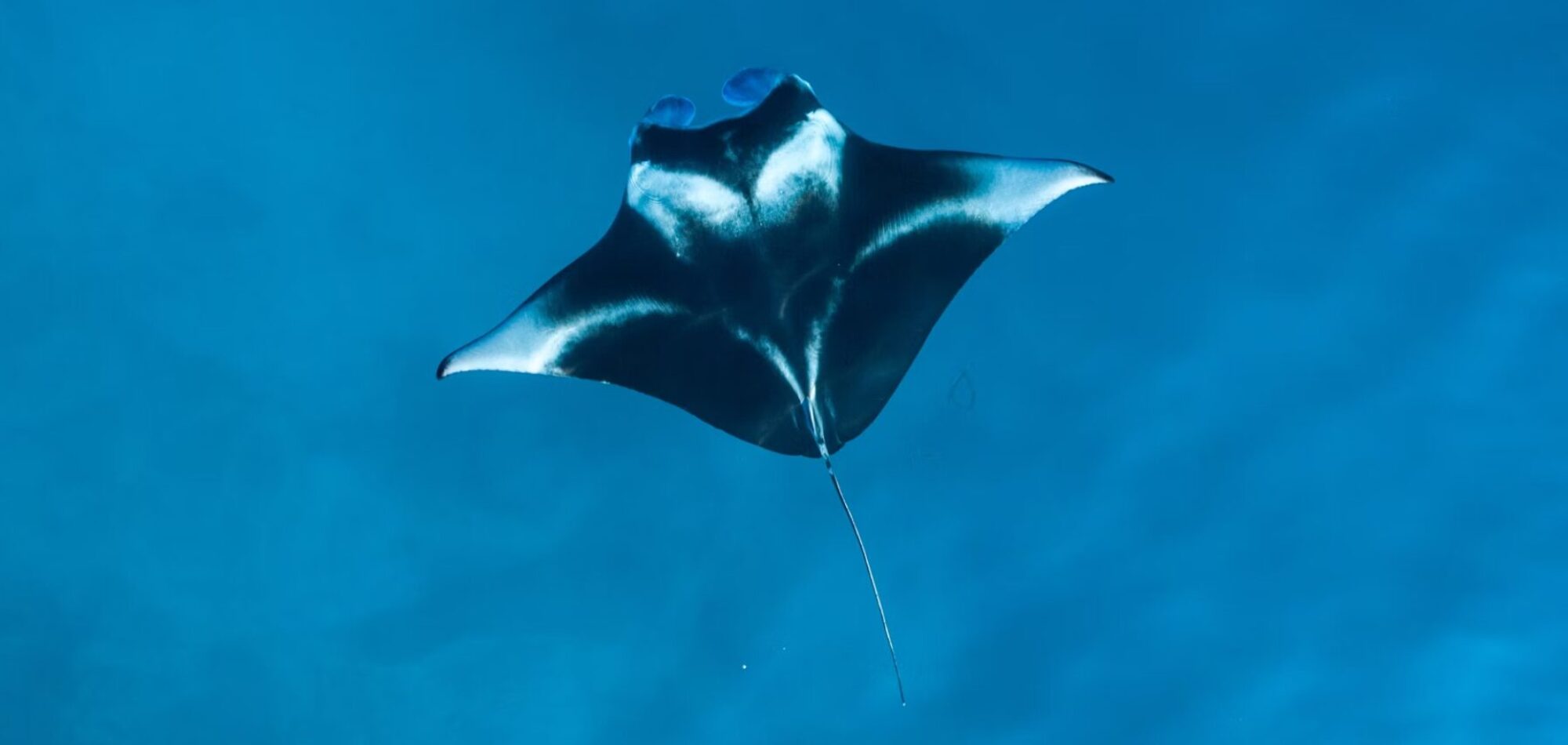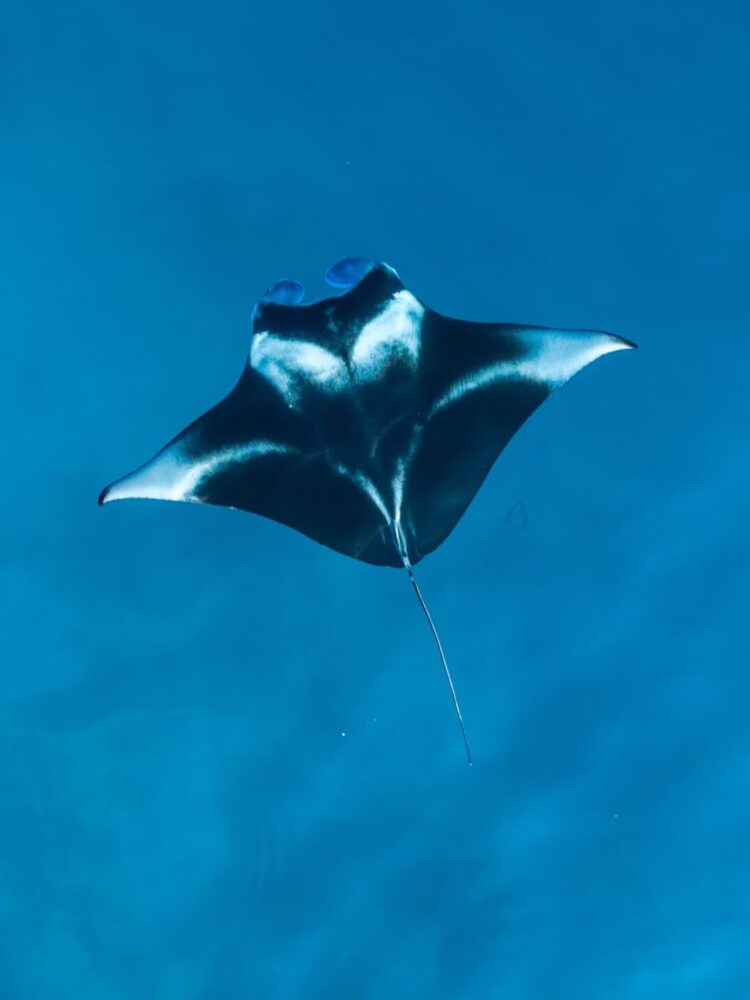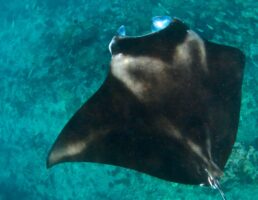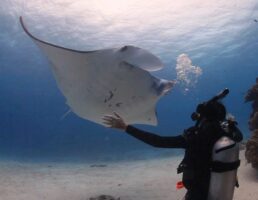

Majestic Manta Rays of Australia: Facts, Threats & Top Dive Spots
Majestic Manta Rays of Australia: Facts, Threats & Top Dive Spots
Australia is home to some of the ocean’s most enchanting creatures: manta rays. Gliding gracefully through tropical and subtropical waters, these gentle giants captivate divers and snorkelers alike with their size, elegance, and intelligence. If you’re dreaming of seeing them in the wild, here’s what makes manta rays so special, the challenges they face, and where you can dive with them around Australia.
Meet Australia’s manta rays
Australia’s waters host two species of manta rays. The larger oceanic manta ray (Mobula birostris) can reach an incredible wingspan of up to seven meters, while the smaller reef manta ray (Mobula alfredi) usually spans around three to four meters. Beyond their sheer size, mantas stand out for their intelligence: they have the largest brain-to-body ratio of any fish, displaying complex behaviours such as coordinated feeding, curiosity toward divers, and even signs of self-recognition. Despite their grand appearance, mantas feed on tiny plankton, sweeping through the water with open mouths as they somersault gracefully. Each manta ray carries a unique pattern of spots on its underside, like a fingerprint, which researchers use to track and study individual animals.
Project Manta is a highly successful Australian research initiative dedicated to studying and protecting manta rays. It brings together scientists, dive operators, and the general public to better understand manta populations, movements, and behaviour. Through photo-identification, satellite tagging, and citizen science, Project Manta has built one of the largest databases of manta sightings in the world. By engaging divers and snorkelers to contribute photos and observations, the project not only advances scientific knowledge but also inspires broader community involvement in manta ray conservation — helping ensure these graceful giants remain a part of Australia’s marine ecosystems for generations to come.
The threats they face
Sadly, manta rays face numerous threats across their range. Accidental capture in fishing gear and targeted fishing for their gill plates – used in some traditional medicines – remain significant issues globally. Closer to home, habitat degradation caused by coral bleaching, coastal development, and pollution threatens the cleaning stations and feeding grounds mantas depend on. Boat strikes and entanglement in discarded fishing nets or lines can lead to injuries or even death. Adding to these pressures, climate change disrupts ocean currents and alters plankton distribution, making it harder for mantas to find food. While manta rays are legally protected in Australian waters, ongoing conservation and responsible tourism play a crucial role in ensuring their survival.
Where to dive with manta rays in Australia
For those hoping to experience the wonder of seeing manta rays in their natural environment, Australia offers some truly remarkable dive sites.
In New South Wales, Julian Rocks Nguthungulli Nature Reserve off of Byron Bay is a prime location to encounter reef manta rays, particularly from May to October. The combination of subtropical waters and vibrant reef life creates a perfect setting for unforgettable encounters.
Further north, Queensland’s Gold Coast boasts two excellent spots. At North Stradbroke Island, manta rays appear regularly from spring through early autumn, cruising over rocky reefs and cleaning stations. Nearby, Cook Island is another hotspot where divers and snorkelers often see mantas gliding alongside turtles and colourful corals. They also appear in these spots from May to October.
The southern Great Barrier Reef is especially renowned for manta ray encounters. Lady Elliot Island has earned its reputation as the “Home of the Manta Ray,” with peak season usually from May to August, although mantas may be sighted year-round. Close by, Lady Musgrave Island offers equally magical experiences, with calm lagoons and healthy reefs that attract these graceful filter feeders.
All the locations listed above can be reached on a drive up the east coast of Australia.
Over on the west coast, Ningaloo Reef near Coral Bay is famous for encounters with both reef and oceanic manta rays. Sightings can happen at any time of year, with numbers peaking between May and November. With only a few tour operators running trips to this remote, untouched beauty of Ningaloo they will makes every dive here feel wild and special.
Tips for a respectful encounter
When you do meet a manta ray underwater, remember to be a considerate guest in their world. Keep a respectful distance and never touch them, as human contact can damage their delicate skin. Avoid using flash photography, which can disturb them. Choose dive and snorkel operators who follow ethical guidelines and support local research and conservation initiatives, ensuring that your visit helps protect these magnificent creatures for generations to come.
A dive experience like no other
Swimming alongside a manta ray in Australia isn’t just another tick on a diver’s bucket list – it’s a profound moment that connects us to the beauty and fragility of our oceans. Whether you’re exploring the subtropical reefs of Byron Bay, drifting through the coral gardens of the southern Great Barrier Reef, or adventuring along Western Australia’s Ningaloo Reef, an encounter with a manta ray is an experience you’ll treasure forever.
For more information on Australia’s locations to encounter manta rays please contact us Steve on MB: 0499 464 007 or email steve@diveinaustralia.com.au









